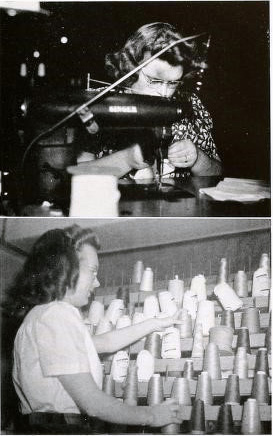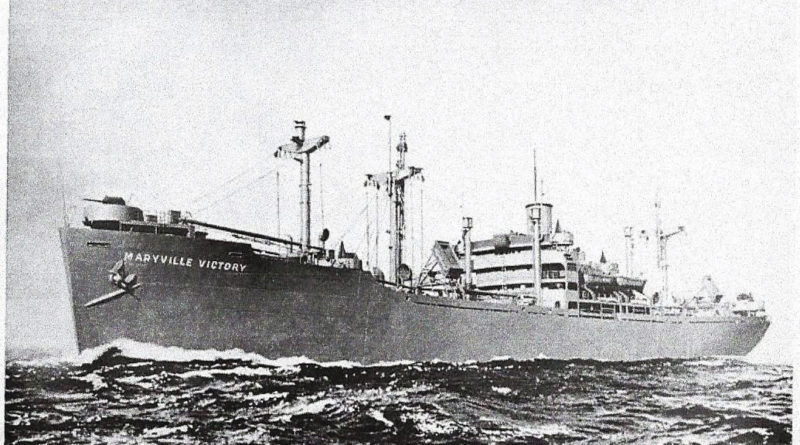Maryville College Fights WWII
When Pearl Harbor was attacked by the Japanese on December 7, 1941, World War II came to Maryville College. Maryville College played a very active role in war-time efforts. The Maryville College Bulletin from 1943 stated, “In the nation’s total war effort, colleges have a vital part and are vitally affected. They are the centers of training.”
According to Maryville College records, not only did the total number of male students decline, but also overall attendance levels and enrollment dropped. The national call for help from young men on the home front increased, and in turn, so did the number of women enrolled here. In 1943, there were twice as many female students as male.
In January 1943, Maryville College and the Red Cross urged women to help with wrapping surgical dressings. The Women’s Army Auxiliary Corps advertised and encouraged the women of Maryville College, during their senior year, to consider a job fundamental to the war effort. While in school, female students worked in the Maid Shop. In the basement of Thaw Hall, they would sew uniforms and other garments for the war effort. By the fall of 1943, the Maryville College Maid Shop began to make uniforms for nurses abroad and recruited more workers.
Women were not the only participants from Maryville College who aided in war efforts. By September 1943, numerous faculty members had joined the war as officers, chaplains or government contractors. Maryville College had already established an Army Training Detachment, as well as the Army Air Forces College Training Program. These two programs helped train Army personnel and Air Force pilots while they completed their college education.
The 1943 College Bulletin stated that they established centers for training in both war services and post-war services. This program’s purpose was to “maintain an established schedule of liberal arts courses with its historical standards of scholarship, culture, and character.”
Additionally, they extended and accelerated the college schedule. The War-Time Accelerated Program enabled students to complete graduation requirements in two years and eight months. This Accelerated Program allowed students to train and earn their degree in a timely manner, so they could serve in the military while their country needed them.

Courtesy of Maryville College Archives
The college Alumni also assisted the war effort with donations to furnish a Victory Ship. In April of 1945, the Maryville College Alumni Magazine announced the launch of the S.S. Maryville Victory. The vessel was 455 feet long and was built for the United States Maritime Commission. In addition to the usual furnishings, alumni donated $350 to furnish a library aboard the ship. The vessel was fully equipped to serve both in times of war and peace.
Towards the end of World War II, concerns for returning veterans received attention by the wartime Congress. Under President Franklin D. Roosevelt, they passed the Servicemen’s Readjustment Act on June 22, 1944. Also known as the G.I. Bill, the SRA provided $20 billion for various programs, such as funding to expand the systems of higher education. Roughly half of returning veterans took advantage of the G.I. Bill’s education program. Veterans of the war were soon the majority of college students. At Maryville College, the enrollment rate increased from 536 during 1945-1946 to 886 during 1946-1947.
In 1947, Dean Dr. Frank McClelland, a veteran himself, gave a speech to the faculty and staff in which he stated, “The scholastic achievements of veterans are enthusiastically commended … and veterans were maintaining and exceeding the normal scholarship standards.” He also stated veterans would “have a profound and permanent effect upon higher education.”
The Dec. 10, 1945 issue of the Highland Echo discussed how veterans were returning to school. As of December 1945, 16 veterans, all former students of Maryville College, had already decided to enroll again. By 1946, 5 percent of the student body were veterans. The 1946 Alumni Magazine stated that the veterans who had already returned “(meant) business and we like them.”
The number of veterans enrolling at Maryville College continued to increase. College records indicate that by 1947, 268 of the 833 enrolled at Maryville College were veterans utilizing the G.I. Bill. According to the 1947 Alumni Magazine, veterans were fitting into college life and doing great academic work. Maryville College continues to uphold a military-friendly status today.

